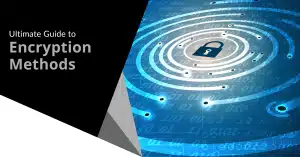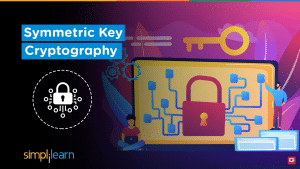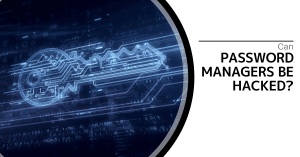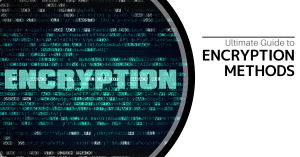In today’s digital world, protecting sensitive information is more critical than ever. Encryption plays a vital role in safeguarding data from cyber threats, ensuring privacy, and securing communications. Whether it’s personal messages, financial transactions, or business data, encryption methods like AES, RSA, and ECC help keep information safe from unauthorized access.
As technology evolves, new encryption techniques, including quantum-resistant cryptography, are emerging to counter future threats. This guide explores various encryption methods, their applications, and best practices to help you understand how to protect your digital assets in 2025 and beyond.
Table of Contents
- Introduction
- Understanding Encryption Fundamentals
- Symmetric Encryption Methods
- Asymmetric Encryption Methods
- Hash Functions
- Quantum-Resistant Encryption
- Encryption in Everyday Applications
- Best Practices for Implementing Encryption
- Future Trends in Encryption Technology
- Conclusion
- FAQ
Introduction
In today’s digital landscape, encryption serves as the foundation of security for everything from casual text messages to critical national infrastructure. As cyber threats evolve, understanding encryption methods has become essential for organizations and individuals alike.
Encryption transforms readable data (plaintext) into an encoded format (ciphertext) that can only be accessed with the proper decryption key. This process ensures that sensitive information remains protected even if intercepted by unauthorized parties.
With data breaches costing organizations an average of $4.9 million per incident in 2025, effective encryption strategies have never been more critical.
Understanding Encryption Fundamentals
Before diving into specific methods, it’s important to understand several key encryption concepts:
- Keys: Secret values used to encrypt and decrypt data
- Algorithms: Mathematical formulas that determine how encryption and decryption occur
- Key length: Measured in bits, with longer keys generally providing stronger security
- Entropy: The randomness and unpredictability of encryption keys
The strength of encryption depends primarily on the algorithm used and the key length. As computing power increases, encryption methods must continually evolve to maintain security.
| Key Length | Approximate Time to Brute Force (2025 Standard Computing) |
| 56-bit | Seconds |
| 128-bit | Millions of years |
| 256-bit | Theoretically impossible with classical computing |
| 2048-bit (RSA) | Theoretically impossible with classical computing |
Symmetric Encryption Methods
Symmetric encryption uses the same key for both encryption and decryption, making it faster and more efficient than asymmetric methods. However, it requires secure key exchange between parties.
Popular Symmetric Algorithms in 2025
- Advanced Encryption Standard (AES)
- The global standard for symmetric encryption
- Key sizes: 128, 192, or 256 bits
- Used in government systems, financial institutions, and consumer applications
- Extremely secure when implemented correctly
- ChaCha20
- Stream cipher gaining popularity for mobile and low-power devices
- 256-bit key and 96-bit nonce
- Offers excellent performance on hardware without dedicated AES acceleration
- SNOW-V
- Next-generation stream cipher for 5G networks
- Optimized for high-speed data transmission
- Provides both confidentiality and integrity protection
Symmetric encryption excels at securing large volumes of data efficiently but faces challenges in key distribution and management across multiple parties.
Asymmetric Encryption Methods
Also known as public-key cryptography, asymmetric encryption uses mathematically related key pairs—one public and one private. Information encrypted with the public key can only be decrypted with the corresponding private key.
Key Asymmetric Algorithms
- RSA (Rivest-Shamir-Adleman)
- Based on the difficulty of factoring large prime numbers
- Standard key sizes now start at 3072 bits for adequate security
- Used for secure communications and digital signatures
- Slower than symmetric algorithms but solves key exchange problems
- Elliptic Curve Cryptography (ECC)
- Based on algebraic structures of elliptic curves
- Provides equivalent security to RSA with much shorter key lengths
- Key sizes typically range from 256 to 521 bits
- More efficient for mobile and IoT devices with limited resources
- Post-Quantum Cryptography (PQC)
- Includes lattice-based, hash-based, and multivariate cryptographic systems
- Designed to resist quantum computing attacks
- Increasingly implemented in forward-thinking security architectures
Asymmetric encryption forms the backbone of secure internet communications, enabling secure connections between parties who have never previously exchanged secret keys.
Hash Functions
While not encryption methods in the traditional sense, hash functions play a crucial role in modern cryptography. These one-way mathematical functions convert data of any size into fixed-length outputs called hash values.
Critical Hash Functions
- SHA-256/SHA-3
- Industry standard for ensuring data integrity
- Used in digital signatures, blockchain technology, and password storage
- SHA-3 provides an alternative in case vulnerabilities are discovered in SHA-2
- BLAKE3
- High-performance cryptographic hash function
- Significantly faster than previous generation algorithms
- Gaining adoption in performance-sensitive applications
- Argon2
- Specialized for password hashing and key derivation
- Designed to be memory-hard, hampering brute-force attacks
- Winner of the Password Hashing Competition
Hash functions verify data integrity and authenticate messages without revealing the original input, making them essential for digital signatures and blockchain applications.
Quantum-Resistant Encryption
The development of powerful quantum computers threatens traditional encryption methods, particularly those based on factoring large numbers (like RSA) or discrete logarithm problems.
Leading Post-Quantum Approaches
- Lattice-Based Cryptography
- CRYSTALS-Kyber and CRYSTALS-Dilithium standardized by NIST
- Based on the difficulty of solving certain lattice problems
- Generally efficient with reasonable key sizes
- Hash-Based Signatures
- SPHINCS+ offers stateless hash-based signatures
- Relies on the security of underlying hash functions
- Conservative approach with strong security guarantees
- Isogeny-Based Methods
- Based on maps between elliptic curves
- Offers compact key sizes but faces ongoing scrutiny
Organizations handling long-term sensitive data are increasingly implementing hybrid cryptographic systems that combine traditional and quantum-resistant methods.
Encryption in Everyday Applications
Encryption has become ubiquitous in daily digital interactions:
- End-to-End Encrypted Messaging
- Signal Protocol provides secure communications across popular apps
- Combines the Double Ratchet Algorithm, prekeys, and triple Diffie-Hellman handshakes
- Transport Layer Security (TLS)
- Secures web browsing, email, and file transfers
- TLS 1.3 mandates perfect forward secrecy and strong ciphers
- Full Disk Encryption
- BitLocker, FileVault, and VeraCrypt protect data at rest
- Uses AES with XTS mode for sector-level encryption
- Homomorphic Encryption
- Allows computation on encrypted data without decrypting
- Enables privacy-preserving cloud computing and analytics
- Still performance-intensive but improving rapidly
Best Practices for Implementing Encryption
Implementing encryption effectively requires more than selecting the right algorithm:
- Use current standards and established libraries
- Avoid implementing encryption algorithms yourself
- Rely on well-tested, open-source cryptographic libraries
- Ensure proper key management
- Implement secure key generation with sufficient entropy
- Establish protocols for key rotation and revocation
- Consider hardware security modules (HSMs) for key protection
- Layer encryption appropriately
- Apply encryption at multiple levels (data, file, transport)
- Combine symmetric and asymmetric methods for optimal security and performance
- Stay informed and adaptable
- Monitor cryptographic developments and vulnerabilities
- Plan for crypto-agility to update algorithms when needed
Future Trends in Encryption Technology
The encryption landscape continues to evolve rapidly:
- Lightweight Cryptography: Specialized algorithms for IoT and resource-constrained devices
- Threshold Cryptography: Distributing trust across multiple parties to eliminate single points of failure
- Quantum Key Distribution (QKD): Using quantum mechanics principles for theoretically unbreakable key exchange
- Zero-Knowledge Proofs: Proving knowledge of information without revealing the information itself
Conclusion
Encryption remains our primary defense against unauthorized data access in an increasingly interconnected world. By understanding the various encryption methods available—symmetric, asymmetric, hashing, and quantum-resistant approaches—organizations and individuals can make informed decisions about protecting their sensitive information.
Remember that encryption is just one component of a comprehensive security strategy. When combined with strong authentication, access controls, and security awareness, encryption provides the foundation for protecting our most valuable digital assets.
FAQ
Q: What is encryption, and why is it important?
A: Encryption converts readable data into a secure format, protecting it from unauthorized access.
Q: What are the main types of encryption methods?
A: Symmetric, asymmetric, hash functions, and quantum-resistant encryption.
Q: What is the difference between symmetric and asymmetric encryption?
A: Symmetric uses one key for encryption and decryption, while asymmetric uses a key pair.
Q: What is AES, and why is it widely used?
A: AES is a secure and efficient symmetric encryption algorithm used globally.
Q: How does RSA encryption work?
A: RSA uses a public key for encryption and a private key for decryption.
Q: What is ECC, and how does it compare to RSA?
A: ECC offers the same security as RSA but with shorter key lengths and better efficiency.
Q: What are hash functions, and how are they used in encryption?
A: Hash functions convert data into a fixed-length string for integrity verification.
Q: What is post-quantum cryptography (PQC), and why is it important?
A: PQC protects against quantum computer attacks that could break traditional encryption.
Q: How does encryption protect everyday digital activities?
A: It secures messaging, web browsing, transactions, and cloud data.
Q: What are some best practices for implementing encryption?
A: Use strong encryption, manage keys properly, and stay updated on security trends.
Q: What are the future trends in encryption technology?
A: Lightweight cryptography, quantum key distribution, and zero-knowledge proofs.
Q: Is encryption alone enough to secure data?
A: No, additional security measures like authentication and access controls are needed.













